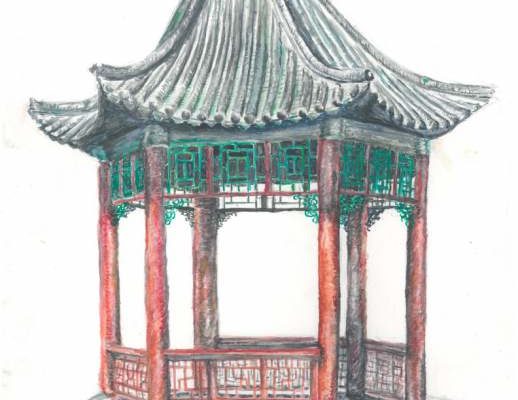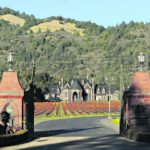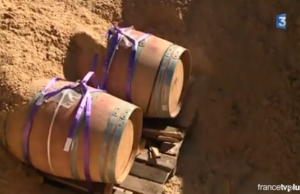Sonoma seeks to honor Chinese laborers who shaped wine industry

Immigrant Chinese laborers who planted some of California’s first grapevines are getting the public acknowledgment that eluded them during the 19th century, when their backbreaking efforts helped establish the Sonoma Valley wine industry.
An ambitious campaign is underway to finance a Chinese-style pavilion in Sonoma’s Depot Park, not far from the vineyards where skilled laborers tended grapes, grafted vines, dug wine caves and dedicated long hours as cellar workers, all reportedly for payment of $1 a day.
The nonprofit Sonoma Sister Cities Association, led by the Sonoma-Penglai (China) Sister City Committee, hopes to raise $100,000 for the gazebo-like pavilion, known as a Ting, a place of peace and respite.
The structure — an expression of gratitude and acknowledgment of the immigrants’ contributions to the California wine industry — is projected to cost $75,000. Additional funds are needed for ongoing upkeep.
The Wine Country Chinese Legacy Project benefits from a Lunar New Year celebration this Sunday at Jacuzzi Family Vineyards in the Carneros region south of Sonoma. It’s one of several fundraising efforts organizers hope will finance the tribute they consider long overdue.
“It’s the Chinese who helped Sonoma leapfrog the other wine-growing regions,” said Peggy Phelan, chair of the Sonoma-Penglai Sister City Committee. “People understand the contributions the Chinese made to the (transcontinental) railroad. It’s really the same in the wine industry, but it’s never acknowledged.”
She considers the pavilion not just a monument acknowledging the Chinese laborers, but also an educational tool highlighting a lesser known segment of California history.
“They were working in the vineyards, building wine caves, doing terracing, and there’s evidence they were working in cellars, helping with winemaking and helping in (winery) owners’ homes,” Phelan said. “They were doing a lot.”
The workers, as well as other Chinese laborers in the community, suffered “a shameful, demeaning racial movement” between 1879 and the 1890s, according to accounts relayed by Robert M. Lynch in his book, “The Sonoma Valley Story: Pages Through the Ages.”
“It is such a shameful piece of history that nobody realized was happening in our own backyard,” Phelan said.
Gordon Phillips, who wrote his Sonoma State University master’s thesis on the history of the Chinese in Sonoma County, said the laborers were sojourners, mostly from the Pearl River Delta, with an “economic strategy” to earn money and help their families.
Known as skilled and dependable workers who provided efficient work through labor contractors, winery owners “loved the Chinese and were really depending on them. The white laborers would just as soon walk off the field and leave if they got tired,” he said. “It’s been well-documented.”
Phillips, a retired lawyer and original member of the Sonoma-Penglai Sister Cities Committee, approached Sonoma Sister Cities Association Board Member Jack Ding about establishing a tribute to the laborers. They presented the proposal, hopeful it would be “a wonderful remembrance that a lot of our success is due to the Chinese people working the fields,” Phillips said.
The workers endured social and labor hostilities as anti-Chinese sentiment developed in San Francisco and swept across the state, Phillips said. “It was vile.”
The Wine Country Chinese Legacy Project is an effort to celebrate those who worked so hard in the early wine industry, despite mounting racism. The tribute has been endorsed by the Sonoma City Council, the Redwood Empire Chinese Association, the Chinese Historical Society of America Museum and the Consulate General of the People’s Republic of China in San Francisco, among others.
Click here to view original web page at www.pressdemocrat.com



















